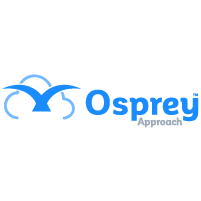Lessons learned from switching legal software solutions – find out more with Osprey Approach
Karen Edwards, head of professional development at the ILFM, and former director at an SME law firm – joined Amy Bruce, head of marketing at Osprey Approach, for episode ten of the Empowering Law Firm Leaders podcast.
In this conversation, Karen shares her critical lessons learned from switching and migrating practice and case management systems to help you improve success.
- How to effectively prepare before choosing the right system
- Best practices for migrating data
- Tips for building the right project team
Karen’s top three lessons learnt from switching legal software
- Ask the right questions:Karen emphasises the significance of asking the right questions before selecting a new legal software solution. “Making sure that you ask the right questions is crucial throughout an implementation and migration project to ensure that you are investing in the right products,” she explains. This involves a thorough internal assessment to understand what your firm needs and expects from the new system: “Fully understand what your current challenges and goals are; thinking about what you need from a new system is critical.”
- Engage your team from the outset:“Buy-in is so important, the whole change management piece is really,” Karen shares. Engaging your team early in the process ensures that the system meets the needs of all users, from the finance department to the support team. Karen recounts an example where a firm switched systems without adequate consultation, leading to significant issues. “Within three months, they found that the financial package wasn’t working for them, and they had to revert to their previous system.” Karen recommends, “rather than just having an IT team [on the project], that doesn’t know what the accounts team needs to be compliant, or what the firm’s partners or directors need from management information, [involve] the people that are actually going to be using it on a day-to-day basis. It’s really important to bring your people along on that journey from all areas of the business.”
- Plan for long-term investment:Karen also stresses the need to, “Really understand the longer-term future investment requirements of systems,” she advises. This includes considering the costs of customisation, ongoing support, and potential future upgrades.She points out that some systems may appear cost-effective initially but require significant investment in customisation and development to meet the firm’s needs. “You might be getting just the basic shell and then have to invest tens of thousands of pounds in either a consultancy team or internal staff to fully customise the system,” she explains. Properly scoping out these costs and planning for them is essential to avoid unexpected financial burdens.
How to prepare your firm before migrating to a new practice management solution
Karen highlights the common pitfall of firms rushing into decisions without adequate due diligence. “Some firms fall into the trap of wanting to change and improve their systems quickly, but they don’t spend enough time ensuring the new system fits their specific needs,” she notes. This can lead to costly mistakes, including the need to switch systems multiple times within a short period, which disrupts productivity and impacts the firm’s bottom line.
Karen advises firms should, “have a clear idea as to where you are trying to go; what your strategies are; what your aims are; and how that you can find a technology solution that fits that. You don’t want to set your firm up to fail.”
As well as understanding what you want the system to achieve, Karen advises that firms are realistic about their timescales and communicate them to the firm: “It’s important to be both realistic and pragmatic when planning a major kind of migration project.”
Preparing your data is the final step to preparing for implementation. Karen explains, “A lot of mistakes and frustrations arise when firms don’t spend the time and money just focusing on the migration of the data.
“If you’re thinking about moving in a few years’ time to a new system, then start thinking about your data now… The data going into your systems is one of the most important things to be thinking about before you can start looking at transitioning over, because you don’t want to be working with rubbish data every day… It just slows you down.”
Successfully implement new practice and case management software
Switching legal software solutions is a significant undertaking that requires careful planning, thorough due diligence, and active engagement from the entire team. By asking the right questions, involving all stakeholders, planning for long-term investment, and ensuring continuous training and support, SME law firms can successfully navigate this process to ensure the technology investments meet their goals and needs and are a long-term solution.
Karen’s insights provide a valuable roadmap for firms looking to switch practice and case management systems to stay competitive in the modern legal landscape: “I love technology, and there are so many great systems out there. But it’s easy to get overwhelmed by the choice.
“Start by understanding what you need, include all relevant stakeholders, and get feedback to make sure everyone is onboard.”
Watch the full interview with Karen Edwards now to discover more advice and guidance on switching software and hear more real-life examples of success and failures from Karen’s experience. You’ll also hear Karen’s exclusive best practices for migrating data and building a successful implementation project team.
Listen on Spotify, Amazon Music, or YouTube now.
Youtube link embedded into article on LPM: Empowering Law Firm Leaders: Episode 10 with Karen Edwards – Lessons from switching legal software



